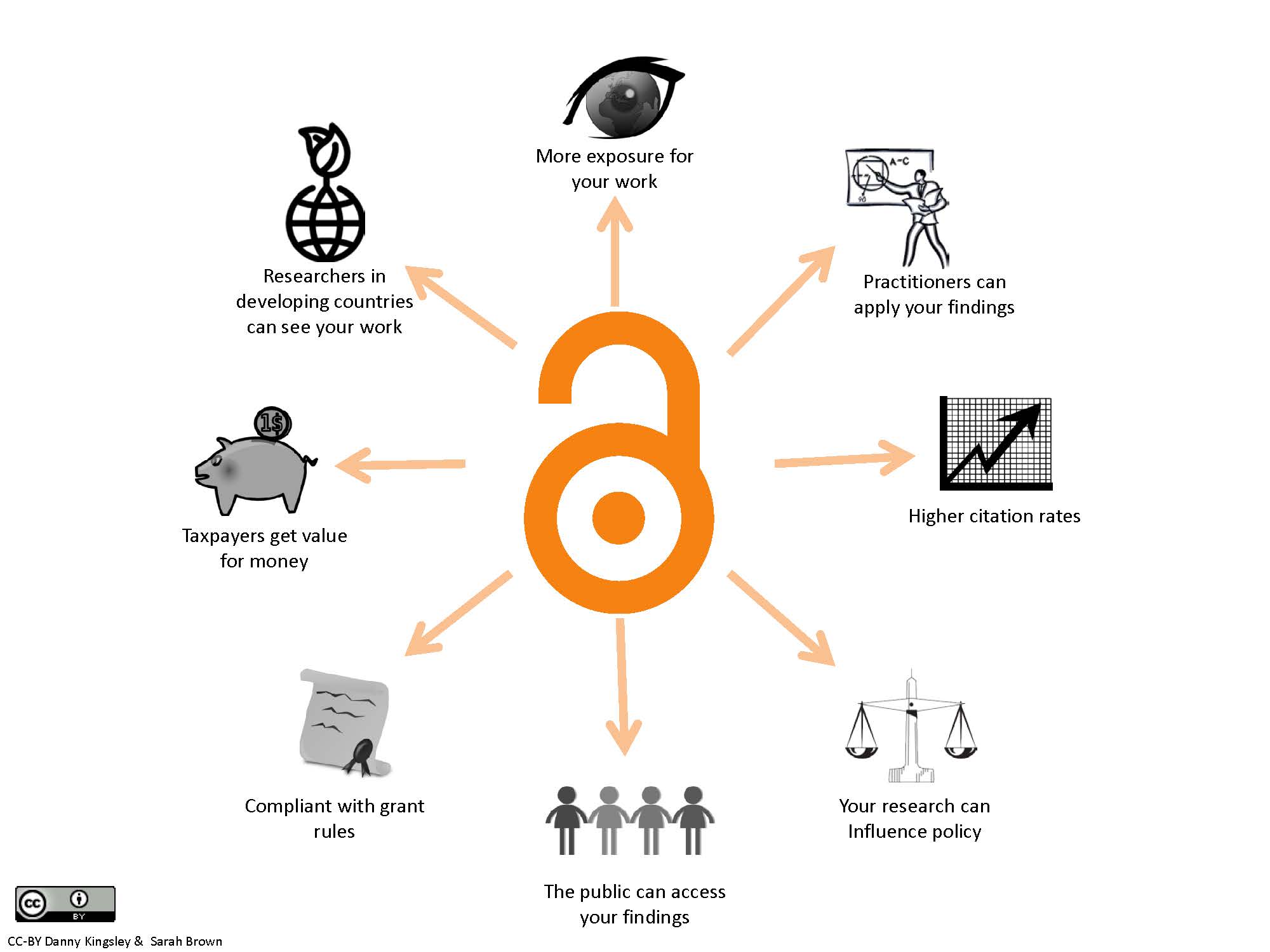What is Open Access?

The Budapest Open Access Initiative (BOAI) defines open access as:
By "open access"...we mean free availability on the public internet, permitting any users to read, download, copy, distribute, print, search, or link to the full texts of...articles, crawl them for indexing, pass them as data to software, or use them for any other lawful purpose, without financial, legal, or technical barriers other than those inseparable from gaining access to the internet itself. The only constraint on reproduction and distribution, and the only role for copyright in this domain, should be to give authors control over the integrity of their work and the right to be properly acknowledged and cited.
Open Access Overview by Peter Suber
Berlin Declaration on Open Access to Knowledge in the Sciences and Humanities
Box inspired by Liberty McCoy @ University of La Verne
Open Access 101
Myths About Open Access
Open access journals are an excellent way to publish new work in an accessible format, but there are many other ways to engage in open scholarship. Digital research repositories are an effective way to archive material that has already been published while retaining copyright, and the last decade has seen a huge rise in available repositories. Sites such as the Registry of Open Access Repositories (ROAR) list thousands of instruction and subject based repositories to share your research. Indiana University Libraries also has its own repository, IUScholarWorks, which faculty and students can deposit in.
This is untrue for several reasons, the most prominent being the fact that Open Access allows for authors to fully retain their copyright in order to disseminate their work widely. There are also many different "flavors" or kinds of open access. One is green open access, where authors can still publish in the closed journal of their choice but negotiate their self-archiving policy so that an open access version of the work exists.
Less than half of open access publication require publications fees, whereas nearly all of subscription-based journals require such fees from readers and/or libraries. Even in the case of an open access journal charging a publication fee, authors can sometimes find funding through their grant agency to.
Open access publications consistently show greater levels of citation, an important impact factor that is still considered for tenure and promotion. The overall goal of open access is to make information more accessible, addressing current inequities in academic access as well as encouraging professionals to research together without paywall obstacles. Using open access repositories to store your work ensures the security and preservation of your research, while publishing open access can often support authors in retaining their copyright.
Sources
This guide was partially created by Jenny Hoops.
